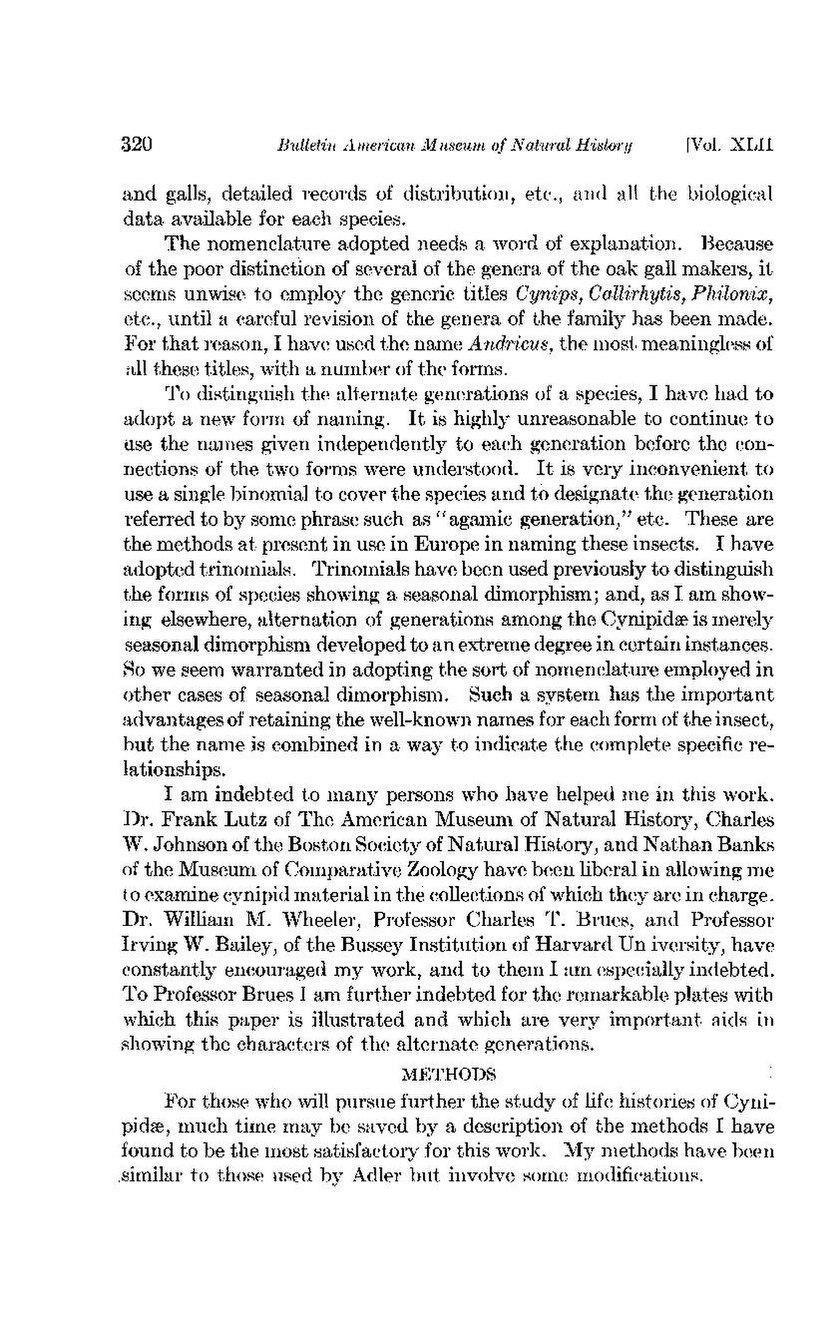and galls, detailed records of distribution, etc., and all the biological data available for each species.
The nomenclature adopted needs a word of explanation. Because of the poor distinction of several of the genera of the oak gall makers, it seems unwise to employ the generic titles Cynips, Callirhytis, Philonix, etc., until a careful revision of the genera of the family has been made. For that reason, I have used the name Andricus, the most meaningless of all these titles, with a number of the forms.
To distinguish the alternate generations of a species, I have had to adopt a new form of naming. It is highly unreasonable to continue to use the names given independently to each generation before the connections of the two forms were understood. It is very inconvenient to use a single binomial to cover the species and to designate the generation referred to by some phrase such as “agamic generation,” etc. These are the methods at present in use in Europe in naming these insects. I have adopted trinomials. Trinomials have been used previously to distinguish the forms of species showing a seasonal dimorphism; and, as I am showing elsewhere, alternation of generations among the Cynipidæ is merely seasonal dimorphism developed to an extreme degree in certain instances. So we seem warranted in adopting the sort of nomenclature employed in other cases of seasonal dimorphism. Such a system has the imnportant advantages of retaining the well-known names for each form of the insect, but the name is combined in a way to indicate the complete specific relationships.
I am indebted to many persons who have helped me in this work. Dr. Frank Lutz of The American Museum of Natural History, Charles W. Johnson of the Boston Society of Natural History, and Nathan Banks of the Museum of Comparative Zoology have been liberal in allowing me to examine cynipid material in the collections of which they are in charge. Dr. William M. Wheeler, Professor Charles T. Brues, and Professor Irving W. Bailey, of the Bussey Institution of Harvard University, have constantly encouraged my work, and to them I am especially indebted. To Professor Brues I am further indebted for the remarkable plates with which this paper is illustrated and which are very important aids in showing the characters of the alternate generations.
METHODS
For those who will pursue further the study of life histories of Cynipidæ, much time may be saved by a description of the methods I have found to be the most satisfactory for this work. My methods have been similar to those used by Adler but involve some modifications.
